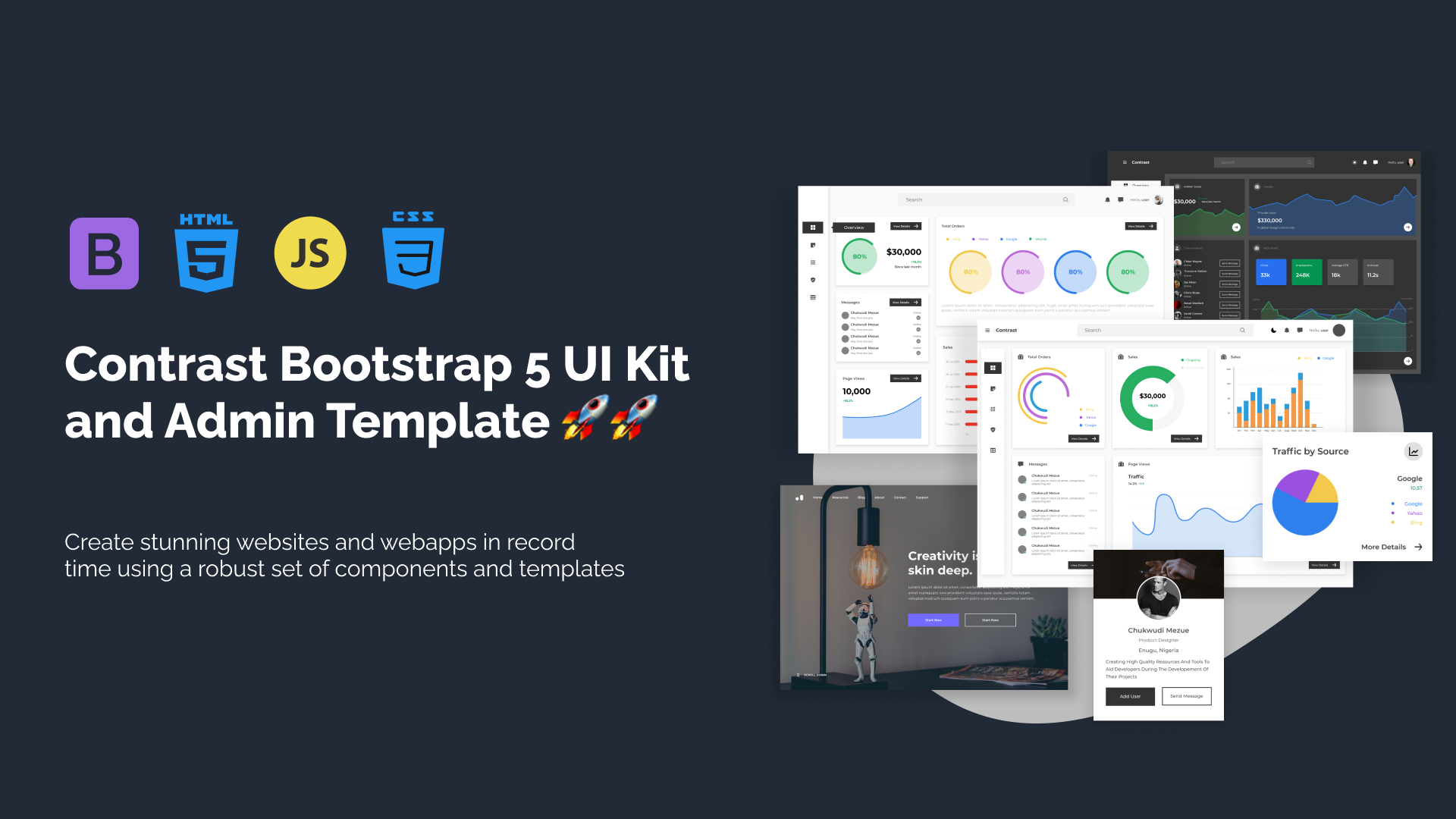
How to use Tailwind CSS Grid.

By Emmanuel Chinonso
Technical Writer/Web Developer
Introduction
In today's web development world, creating responsive layouts is essential. Grid systems provide a structured way to design and organize content on a webpage. Tailwind CSS, a popular utility-first CSS framework, offers a powerful grid system that allows you to create dynamic and flexible layouts. In this blog post, we will explore how to use the Tailwind CSS grid to build responsive and visually appealing designs.
Table of content
- What is Tailwind Grid System
- Getting Started with Tailwind CSS Grid
- The Basics of Tailwind Grid
- Creating a Basic Grid Layout
- Customising Your Tailwind Grid Layout
- Creating Responsive Layouts
- Tailwind CSS Grid Template Rows
- Tailwind CSS Grid Template Rows Example
- Tailwind CSS Grid Template columns
- Adding the Tailwind CSS grid column
- Adding space and gap in the Tailwind grid
- How do you make a Tailwind grid Responsive
- Creating Complex Layouts
- Using Tailwind CSS Grid with Other Frameworks
- Conclusion
- Resources
In today's digital age, creating a responsive website has become a top priority for web developers. One of the most popular CSS frameworks used for building responsive web design is TailwindCSS or simply Tailwind.
Tailwind is a popular utility-first CSS framework, which offers a powerful grid system that allows developers to create flexible and responsive layouts effortlessly.
Tailwind grid is based on the CSS Grid layout model, which makes it easier to create responsive and mobile-friendly designs. Tailwind grid is designed to be highly customizable, so you can create the exact layout you need for your project.
In this article, we will explore how to use Tailwind Grid. We are also going to use this grid system to build different design layout.
What is Tailwind Grid System?
Tailwind grid System is a two-dimensional layout that is made up of rows and columns of horizontal and vertical lines. It is a collection of classes and utilities that can create complex layouts quickly and easily.
Getting Started with Tailwind CSS Grid
Before you can start using the Tailwind grid, you need to install Tailwind to your project. This can be done with a package manager such as NPM or Yarn.
You can check out how to install Tailwind on your project using the Tailwind docs.
Once you have installed Tailwind, you need to include it in your project. You can do this by adding the following line of code to your HTML file:
<link rel=" stylesheet" href="tailwind.css" />The Basics of Tailwind CSS Grid
Before you start creating complex layouts with Tailwind grid, it is essential to understand the basics. The default Tailwind grid is based on the 12-column grid system.
This means that you can divide your page into 12 columns, each with a specific width. You can also divide your page into rows, with each row having its own set of columns.
Creating a Basic Grid Layout
Once you have installed the Tailwind grid and understand the basics, you can start creating basic grid layouts. To do this, you will need to use the Tailwind grid classes. Below is an example of a basic Tailwind grid layout.
<div class="grid grid-cols-3 gap-4"> <div class="bg-blue-300 p-4 rounded-md text-white font-extrabold text-center">Item 1</div> <div class="bg-green-300 p-4 rounded-md text-white font-extrabold text-center">Item 2</div> <div class="bg-red-300 p-4 rounded-md text-white font-extrabold text-center">Item 3</div></div>The code above shows the Tailwind grid class
Customising Your Tailwind Grid Layout
Once you have created a basic grid layout, you can start customizing it to meet your needs. Tailwind grid has a variety of utility classes that you can use to make your grid look exactly how you want it. You can use classes such as flex, align-items, and justify-content to control the alignment of your elements. You can also use the order class to control the order of your elements.
Creating Responsive Layouts
Tailwind grid makes it easy to create responsive layouts. To do this, you will need to use the col class. This class defines the width of a column and can be used to create responsive designs. You can also use the row class to control the height of your rows.
Tailwind CSS Grid Template Rows
Tailwind grid Template rows are a class used to accept multiple values in tailwind CSS. This property is the same as the CSS grid template rows. Below are the different classes and properties of the Tailwind grid Template rows.
| Class | Properties |
|---|---|
| grid-rows-1 | grid-template-rows: repeat(1, minmax(0, 1fr)); |
| grid-rows-2 | grid-template-rows: repeat(2, minmax(0, 1fr)); |
| grid-rows-3 | grid-template-rows: repeat(3, minmax(0, 1fr)); |
| grid-rows-4 | grid-template-rows: repeat(4, minmax(0, 1fr)); |
| grid-rows-5 | grid-template-rows: repeat(5, minmax(0, 1fr)); |
| grid-rows-6 | grid-template-rows: repeat(6, minmax(0, 1fr)); |
| grid-rows-none | grid-template-rows: none; |
Tailwind CSS Grid Template Rows Example
we are going to look at how to use the Tailwind grid template rows here by building template rows using Tailwind CSS. You can check out the syntax below.
Syntax
<element class="grid grid-rows-number"> Contents... </element><div class="bg-yellow-500 p-8"> <div class="grid grid-row-3 gap-4 md:grid-row-2 lg:grid-row-4"> <div class="bg-blue-700 w-26 h-12 flex items-center justify-center rounded-md">1</div> <div class="bg-blue-500 w-26 flex h-12 items-center justify-center rounded-md">2</div> <div class="bg-blue-300 w-26 flex h-12 items-center justify-center rounded-md">3</div> <div class="bg-blue-500 w-26 flex h-12 items-center justify-center rounded-md">4</div> <div class="bg-blue-400 w-26 flex h-12 items-center justify-center rounded-md">5</div> <div class="bg-blue-300 w-26 flex h-12 items-center justify-center rounded-md">6</div> </div></div>Some of the Tailwind classes used include the following
flex: sets our element in a flexJustify-center: this centers our elementsitems-center: This centers all the elements in the files boxGrid: this creates the grid rowGrid-row-3: this creates a 3-grid rowrounded-md: used to create a rounded corner for an element or body. which is the same as border-radius.md:grid-row-2: this sets up the responsive screen for a medium size device.lg:grid-row-4: this sets up the responsive screen for a large-size device
Tailwind CSS Grid Template Columns
The Tailwind CSS grid template columns are the alternative to CSS grid template columns. This property is used to set the number of columns and the size of the grid layout. Below are the different classes and properties of the Tailwind grid Template columns.
| Class | Property |
|---|---|
| Grid-cols-1: | the row concedes one column |
| Grid-cols-2: | the row concedes two columns |
| Grid-cols-3: | the row concedes three columns |
| Grid-cols-4: | the row concedes four columns |
| Grid-cols-5: | the row concedes five columns |
| Grid-cols-6: | the row concedes six columns |
| Grid-cols-7: | the row concedes seven columns |
| Grid-cols-8: | the row concedes eight columns |
| Grid-cols-9: | the row concedes nine columns |
| Grid-cols-10: | the row concedes ten columns |
| Grid-cols-11: | the row concedes eleven columns |
| Grid-cols-12: | the row concedes twelve columns |
| Grid-cols-none: | this does not follow the grid-column property |
How do I use the Tailwind Grid Column?
Using the Tailwind Grid Column is as simple as specifying the number of columns in the grid layout. An example is a syntax below.
Syntax
<element class="grid grid-cols-{number}"> Content of the element </element>Adding the Tailwind CSS grid column
We are going to build a grid layout using the Tailwind column. Adding the Tailwind grid column is as easy as defining the grid system and adding the number of columns you want to add. For example, in our case, we used the grid-cols-4 utility to add the number of columns we want on the grid layout.
<div class="bg-yellow-500 p-8"> <div class="grid grid-cols-4"> <div class="w-26 flex h-12 items-center justify-center rounded-md bg-blue-700">1</div> <div class="w-26 flex h-12 items-center justify-center rounded-md bg-blue-500">2</div> <div class="w-26 flex h-12 items-center justify-center rounded-md bg-blue-300">3</div> <div class="w-26 flex h-12 items-center justify-center rounded-md bg-blue-500">4</div> <div class="w-26 flex h-12 items-center justify-center rounded-md bg-blue-400">5</div> <div class="w-26 flex h-12 items-center justify-center rounded-md bg-blue-200">6</div> <div class="w-26 flex h-12 items-center justify-center rounded-md bg-blue-600">7</div> <div class="w-26 flex h-12 items-center justify-center rounded-md bg-blue-100">8</div> </div></div>Adding space and gap in the Tailwind grid column
we can see that our Tailwind Grid Column isn't looking nice. We are going to add some spacing and gaps to the Tailwind grid column by using the classes flex, justify-content, and items-center.
<div class="bg-yellow-500 p-8"> <div class="grid grid-cols-4 gap-3"> <div class="w-26 flex h-12 items-center justify-center rounded-md bg-blue-700">1</div> <div class="w-26 flex h-12 items-center justify-center rounded-md bg-blue-500">2</div> <div class="w-26 flex h-12 items-center justify-center rounded-md bg-blue-300">3</div> <div class="w-26 flex h-12 items-center justify-center rounded-md bg-blue-500">4</div> <div class="w-26 flex h-12 items-center justify-center rounded-md bg-blue-400">5</div> <div class="w-26 flex h-12 items-center justify-center rounded-md bg-blue-200">6</div> <div class="w-26 flex h-12 items-center justify-center rounded-md bg-blue-600">7</div> <div class="w-26 flex h-12 items-center justify-center rounded-md bg-blue-100">8</div> </div></div>How do you make a Tailwind grid Responsive
Tailwind CSS Grid also allows you to add responsive breakpoints to your grid layout. This is useful when you want your grid to change its layout based on the screen size. Here is an example:
<div class="bg-yellow-500 p-8"> <div class="grid grid-cols-4 gap-3 md:grid-col-4 lg:grid-col-4"> <div class="w-26 flex h-12 items-center justify-center rounded-md bg-blue-700">1</div> <div class="w-26 flex h-12 items-center justify-center rounded-md bg-blue-500">2</div> <div class="w-26 flex h-12 items-center justify-center rounded-md bg-blue-300">3</div> <div class="w-26 flex h-12 items-center justify-center rounded-md bg-blue-500">4</div> <div class="w-26 flex h-12 items-center justify-center rounded-md bg-blue-400">5</div> <div class="w-26 flex h-12 items-center justify-center rounded-md bg-blue-200">6</div> <div class="w-26 flex h-12 items-center justify-center rounded-md bg-blue-600">7</div> <div class="w-26 flex h-12 items-center justify-center rounded-md bg-blue-100">8</div> </div></div>Creating Complex Layouts
Once you have mastered the basics of the Tailwind CSS grid, you can start creating more complex layouts.
Tailwind CSS grid has a variety of utility classes that can be used to create complex layouts, just like we saw in our examples. You can use classes such as float, flex-wrap, and order to control the alignment and positioning of your elements.
Using Tailwind CSS Grid with Other Frameworks
Tailwind grid can also be used in conjunction with other frameworks such as Bootstrap or Foundation. This makes it easy to create complex layouts quickly and easily. When using Tailwind CSS grid with other frameworks, you will need to make sure that you are using the correct classes to ensure compatibility.
Conclusion
Tailwind CSS Grid is a powerful tool for creating grid layouts in your web projects. It provides a simple and intuitive syntax that allows you to create grids quickly and easily. With Tailwind Grid, you can create grids with any number of columns, align grid items, nest grids, add responsive breakpoints, and set the gap between grid items. If you are looking for a simple and efficient way to create grid layouts in your web projects, Tailwind Grid is definitely worth checking out.
Resources
Build modern projects using Bootstrap 5 and Contrast
Trying to create components and pages for a web app or website from
scratch while maintaining a modern User interface can be very tedious.
This is why we created Contrast, to help drastically reduce the amount of time we spend doing that.
so we can focus on building some other aspects of the project.
Contrast Bootstrap PRO consists of a Premium UI Kit Library featuring over 10000+ component variants.
Which even comes bundled together with its own admin template comprising of 5 admin dashboards and 23+ additional admin and multipurpose pages for
building almost any type of website or web app.
See a demo and learn more about Contrast Bootstrap Pro by clicking here.

Related Posts
Comments
...